





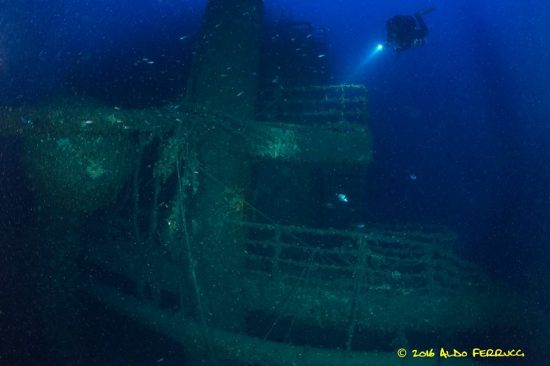
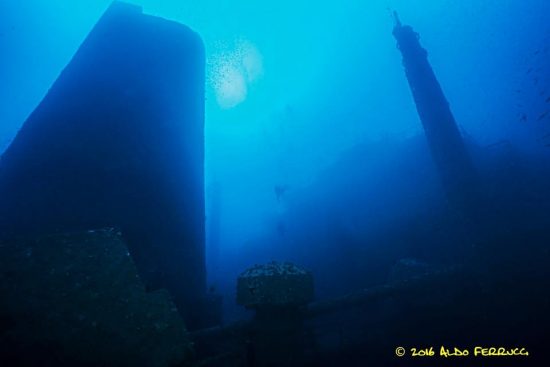
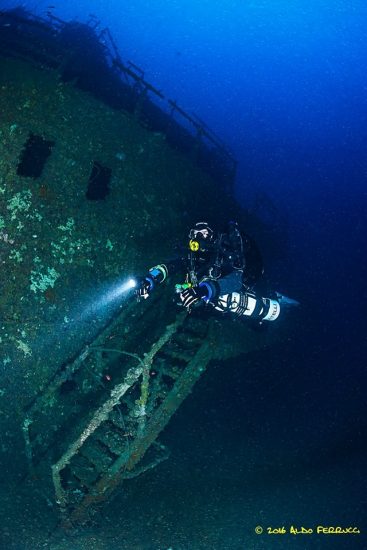
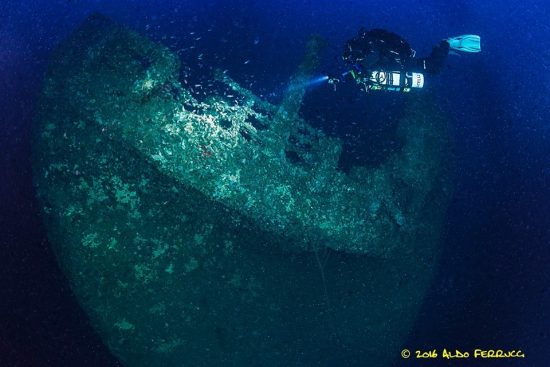
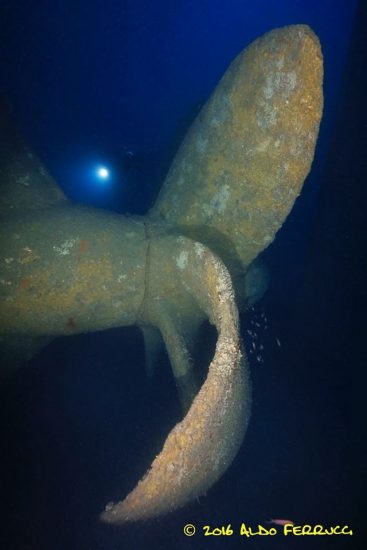
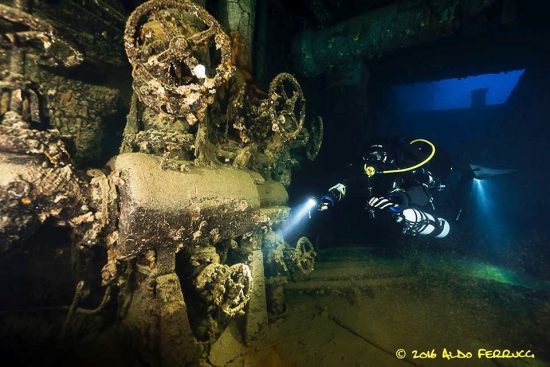
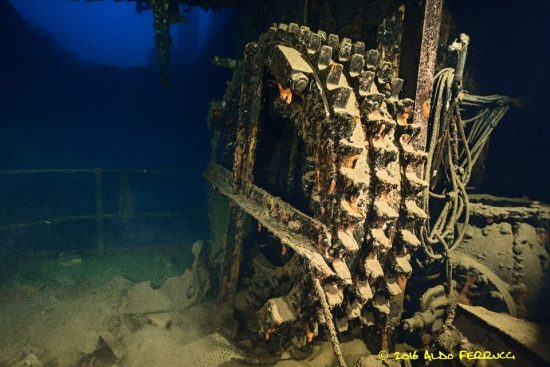
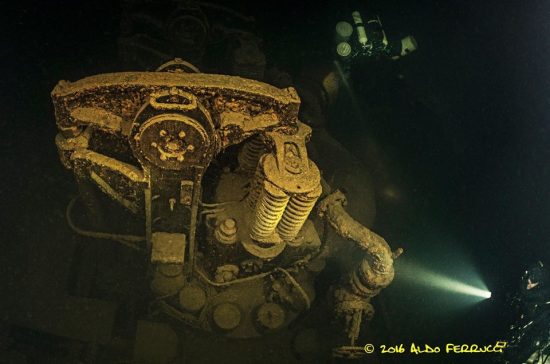
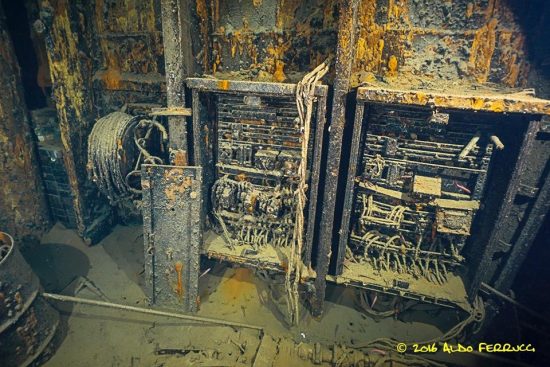
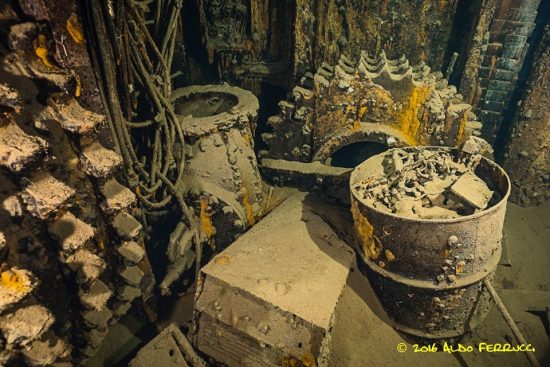
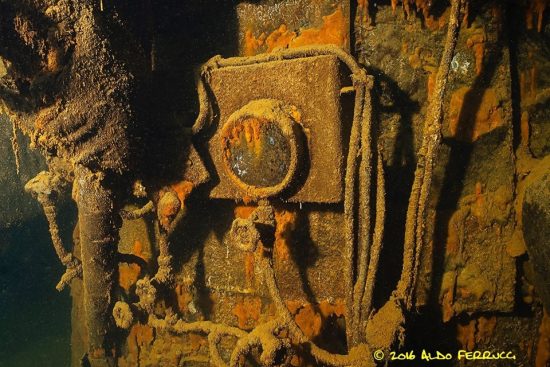
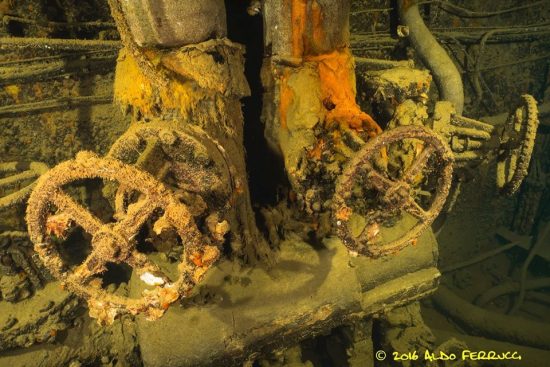
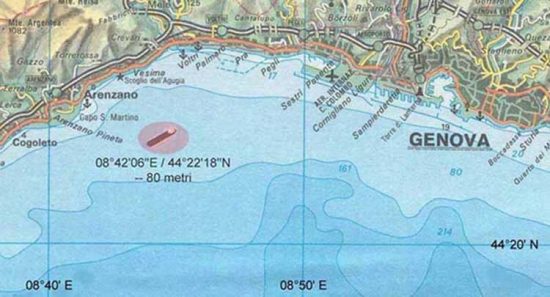
MT Haven, formerly Amoco Milford Haven, is a VLCC-class oil-tanker (Very Large Crude Carrier), in other words a super-tanker, built by Astilleros Españoles S.A. in Cadiz, Spain, the sister ship of Amoco Cadiz, which sank in 1978 and polluted the Atlantic coast off France for decades.
The Haven was incredibly big: 334m long with a beam of 51m and a displacement tonnage of 110,000 tons.
Launched in 1973, the ship worked various routes shipping crude oil from the Middle East gulf. In 1987 it was hit by a missile in the Persian Gulf during the Iran-Iraq War. Extensively refitted in Singapore, it was then sold to ship brokers who leased it to Troodos Shipping, for whom it ran from Iran's Kharg Island to the Mediterranean.
On 11 April 1991, the Haven was unloading a cargo of 230,000 tons of crude oil to the Multedo floating platform, seven miles off of the coast of Genoa, Italy. Having transferred 80,000 tons, it disconnected from the platform for a routine internal transfer operation, to allow oil to be pumped from two side-holds into a central one.
While still loaded with 144,000 tons (1 million barrels) of crude oil, the ship exploded and caught fire, killing six Cypriot crew members.
As the fire engulfed the ship, flames rose 100m high and, after a series of further explosions occurred, between 30-40,000 tons of oil poured into the sea.
The Italian authorities acted quickly, with hundreds of men fighting a fire which was difficult to access, and distributing more than six miles of inflatable barriers, submerged a meter below the surface, around the vessel to control the spillage. On day two, the MT Haven was to be towed close to the coast, in a bid to reduce the coastal area affected and make
intervention easier. As the bow slipped beneath the surface, a steel cable was passed around the rudder and tugs applied towing pressure. But it was quickly clear that the ship had broken its back, and the bow section came to rest in 450m of water. On 14 April, the 250m-long main body sank a mile and a half from the coast, between Arenzano and Varazze, flooding the Mediterranean with up to 50,000 tons of crude oil.
For the next 12 years the Mediterranean coast off Italy and France was polluted, especially around Genoa and southern France.
The sinking of the Haven remains the worst oil-pollution incident ever to occur in the Mediterranean Sea.
The vessel owner Stelios Haji Ioannou (better known as the publicity-conscious proprietor of EasyJet) and his father were prosecuted in Italy in both 1997 and 1998 on charges including manslaughter, extortion and attempting to bribe a witness following the sinking.
They were cleared and the sinking was blamed on human error rather than negligence, however, the case is due to come up on appeal before the Italian Supreme Court again, 26 years after the Haven’s sinking.
The diving
The Haven is the Mediterranean and Europe’s largest shipwreck in the sea and lies at a depth of 33m to 83m off the coast of Arenzano (Genoa)
I have been diving on this beautiful and unique wreck for the last 15 years and I can really say that I am in love with this big baby. But I want to warn every reader before going any further. The baby can be a killer and a dangerous monster for untrained or inattentive divers.
Depending on the day, the current can go from nothing to strong, the visibility can change from a perfect 60+ meters to a very poor 5 meters, it is a giant labyrinth inside which one can get lost, like in any cave system, with sharp metal cutting edges, and huge amounts of silt that can turn water milk-like and trap you. The wreck is huge and deep and you can lose your orientation as well as your notion of time and gas consumption.
No heroes allowed here, you must be humble and patient enough to discover the wreck step by step, piece by piece and according to your own level of training and experience.
The 250 meter long main section of the Haven peacefully lies in an upright position. Part of the superstructure which originally reached up to 24 meters of depth were removed, therefore the shallowest part of the entire wreck, the smokestack, now stands at 33 meters deep.
Techdive’s huge inflatable boats (8.5m and 10m with 300hp engines) transport you to the mooring point in 5 minutes. Organization is perfect and safety non-negotiable: pre-boat checks, pre-dive checks etc… There is a fixed deco station with decompression bars at -9m, -6m and -3m with sufficient spare tanks of air, 50%, 70% and/or 100% according to your dive plan. The descent lines are fixed and lead you down to the quarterback at -33m.
The dimensions of the wreck are overwhelming. In these 15,000 square meters of steel, there are several different exploration areas:
The bridge, different decks + the smokestack (-33 to -55m)
From the wheelhouse - from which the captain maneuvered the tanker and which is almost empty (containing no gauges, instruments or controls as everything was burned away in the very high temperatures before sinking. There is now a memorial plate and two statues of the Virgin Mary) but easy to penetrate - you can go down or up the inner stairs. It is also very easy to go up or down the main lift opening that goes through all bridges or just follow the outside walls. The windows on the side are numerous but sometimes quite small and most of the time too small to go through, every room has a door though.
There are 6 different bridges about 23 meters high, the equivalent of a seven-floor building. Here you will find everything you could ever dream of: bedrooms, bathrooms, the kitchen, a workroom, a tool room etc… It is possible and quite easy to penetrate almost everywhere, but it is a labyrinth and you should consider it as a cave dive (life line, compass, double lighting system etc…). Bubbles make the rust fall from the roof (closed circuit is recommended) and improper trim and buoyancy would lift up the silt, particularly on the mower deck, where the kitchen is located (-55m port side).
The smokestack is on the scale of the wreck: monumental at almost 30 meters high. The exhaust ducts are so large that penetration is easy, although it is of no interest. A fixed rope connects the chimney with the bridge which facilitates the return in case of current or low visibility.
The propeller and the rudder (-70m to -83m)
From the bridge, tek divers can descend to the deck in the back of the tanker, past the winches, pipes and valves that are proportional to the size of the ship and free fall down to the propeller at 82 meters. Here excessiveness still strikes with a rudder 20 meters high and a propeller more than 7 meters in diameter. The dark becomes darker as the cant is important and we lose light from the surface. The depth is maximal but this place is breathtaking and looking up from this point, the tanker is majestic.
The engine room (-65m to -75m)
The engine room entrance is located just under the chimney below -52 m and from there you can go deep inside the ship.
The cathedral type engine room is home to the 8-cylinder 980mm bore and 2000mm stroke diesel engine developing 30'400 hp at 103 rpm. Everything is gigantic there and in a perfect shape. The various electrical panels and counters are still intact.
The explosion hole (-60m to -75m)
Going up on port side, there is a gigantic opening left by one of the two explosions. The gaping hole is so large that it is difficult to comprehend its dimensions and the plates are twisted like a broken can. Inside it is completly black. Penetration through the hole in one of the 13 tanks that contained the crude oil is possible and easy, progressing into a huge metal cave. On the right hand side you can see the huge conic heating spring. At the other end, a few dozen meters away, a staircase leading to a trapdoor allows you to exit directly onto the deck. The bottom of the cistern is at 79m but is of no interest.
The main deck (-50m to -60m) and the front breaking point (-60m to -80m)
A scooter is mandatory as swimming 200m at an average depth of 60m can be long and dangerous. Starting from the bridge, you have 200 meters of flight straight in front of you towards the break at the front. Littered with pipes, giant valves and cranes this drive is a treat for fans of long scooter rides. When you reach the end of the deck, where the boat is broken in to 2 parts, an immense net rests on the full width and falls on the openings left by the explosion. Be careful there too.
If you decide to go a bit further and face the brokenship, the spectacle is striking, with gaping holes of more than 25 meters in height.
You can then either return to the deck or a bit below, to the side along the hull. In several areas where the ship did not burn the antifouling is a perfect blue, as if it had been laid the day before.
Life is steadily starting to return to the wreck. Aided by currents and the burning away (up to 900°c) of the paint and antifouling layers, some walls (particularly the smokestack) and the deck are covered with large, sturdy Oysters, brightly colored sea Anemones and other interesting life forms like all the filter-feeding creatures such as Crinoids and Ascidians. You can also easily see Conger Eels, Forkbeards, Spiny Lobsters and Shrimps. You will regularly cross paths with Groupers, Gurnards and Scorpion-fish sitting on the steel…
Around the wreck, in addition to the clouds of Anthias fish, it is common to see large pelagic fishes swimming on their way: Dentex, Barracudas, Tunas, Amberjack/Seriola, Moonfish/Mola-mola etc…
All underwater photos have kindly been provided by Aldo Ferrucci .
A word of warning (again):
The dives summarized here are deep mixed hypoxic gas rebreather technical diving and you should not attempt this type of diving unless properly trained and – even more importantly – not unless you have the sufficient, real and truly significant experience to carry out these dives.
Recommendations:
For a complete set of technical diving gear, our best and only choice is Mares│XR.
For rebreathers, we are using APDiving and rEvo units.
For scooters, our partner of choice is Suex.
For training, we recommend Aquatiks.
Last but not least, nothing would have been possible without the support of Techdive Arenzano, our favorite extreme technical diving facility in the area.
Check out my other publications on the Mares Blog:
- Unterseeboot U455 – Ligurian Wreck (Part I)
- XR expert Florent M. Locatelli on board with the Mares blog!
 Florent M. Locatelli
Florent M. Locatelli 12th January 2017
12th January 2017 Arenzano, Gênes, Italie
Arenzano, Gênes, Italie 